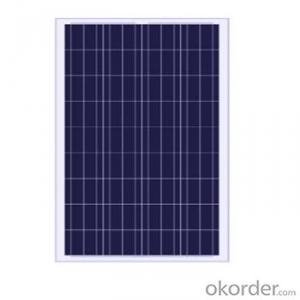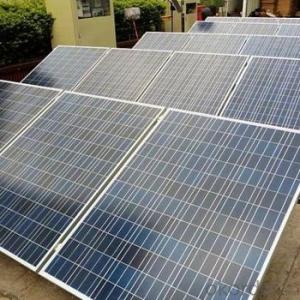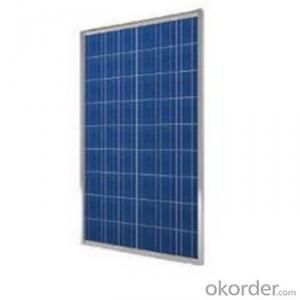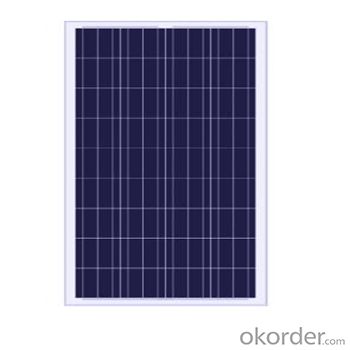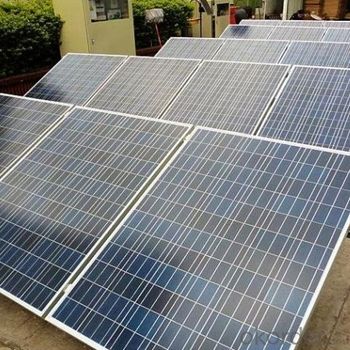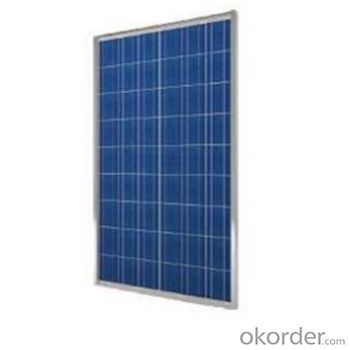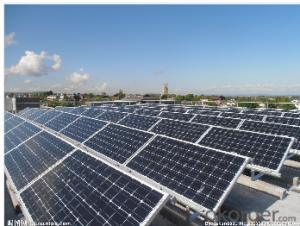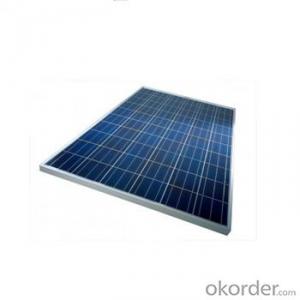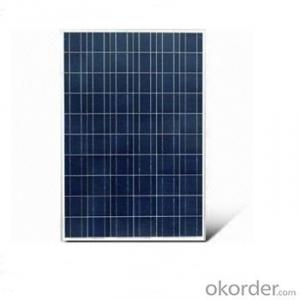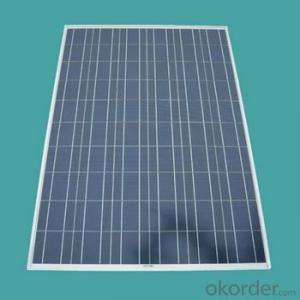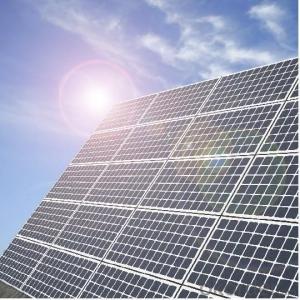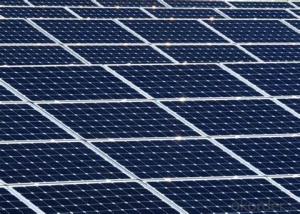Solar Panels Cleveland - Solar Polycrystalline Panels Max Power 280-W
- Loading Port:
- Shanghai
- Payment Terms:
- TT OR LC
- Min Order Qty:
- 100 pc
- Supply Capability:
- 30000 pc/month
OKorder Service Pledge
OKorder Financial Service
You Might Also Like
Product Description:
Solar Polycrystalline Series
Our designing philosophy is making solar product easy to use and convenient to maintain. We adhere to "develop inverter and controller" as our core technology, and built up solar product from 0.5W to 100KW into standard and mass production, meeting most customers' needs in this field.
Product Name : 280W solar panels
Max Power(W) : 280W-36P
Dimension(mm) : 1960*986*50 (mm)
Weight(kg) : 23.5 (kg)
Max Current(A) : 6.94 (A)
Max Voltage(V) : 36 (V)
Short Circuit Current(A) : 7.78 (A)
Open Circuit Voltage(V) : 43.2 (V)
Number of Cell (PCS) : 6*12 (PCS)
Contrast with other model solar panels
ITEM NO. | ESC280W-36P | ESC270W-36P | ESC250W-36P |
Maximum Power (W) | 280 | 270 | 250 |
Optimum Power Voltage (V mp) | 35.14 | 35.14 | 35.14 |
Optimum Operating Current (I mp): | 7.97 | 7.69 | 7.12 |
Open Circuit Voltage (Voc) | 43.2 | 43.2 | 43.2 |
Short Circuit Current (ISC) | 8.53 | 8.21 | 7.6 |
Cell Efficiency (%) | 16.00% | 15.40% | 14.27% |
Module Efficiency (%) | 14.49% | 13.97% | 12.94% |
FF (%) | 70-76% | ||
Warranty | 90% of 10 years, 80% of 25 years. | ||
Standard Test Conditions | AM1.5 1000W/m225 +/-2ºC | ||
Bypass Diode Rating (A) | 12 | ||
Cable & Connector Type | Pass the TUV Certificate | ||
Brand Name of Solar Cells | ----Cell | ||
Size of Module (mm) | 1960*986*50 | ||
Solar Cell | 156*156Poly | ||
Backing (Material) | TPT | ||
Frame (Material Corners, etc.) | Aluminum-alloy | ||
Number of Cell (PCS) | 6*12 | ||
N/W(KG) | 20.96 | ||
Junction Box Type | Pass the TUV Certificate | ||
Tolerance Wattage (e.g. + /-5%) | +3% | ||
Front Glass Thickness (mm) | 3.2 | ||
Surface Maximum Load Capacity | 2400Pa | ||
Allowable Hail Load | 23m/s, 7.53g | ||
Packing | 1*20' | 226pcs | |
1*40'STD | 460pcs | ||
Temperature Coefficients of ISC(%)ºC: | 0.04 | ||
Temperature Coefficients of Voc(%)ºC: | -0.38 | ||
Temperature Coefficients of Pm(%)ºC: | -0.47 | ||
Temperature Coefficients of IM(%)ºC: | 0.04 | ||
Temperature Coefficients of VM(%)ºC: | -0.38 | ||
Temperature Range | -40ºC to +85 | ||

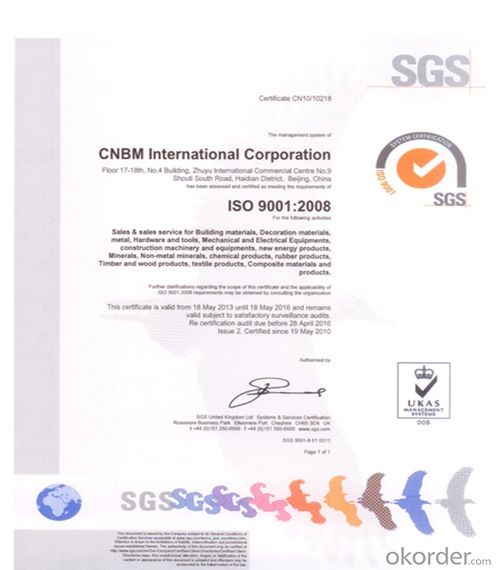
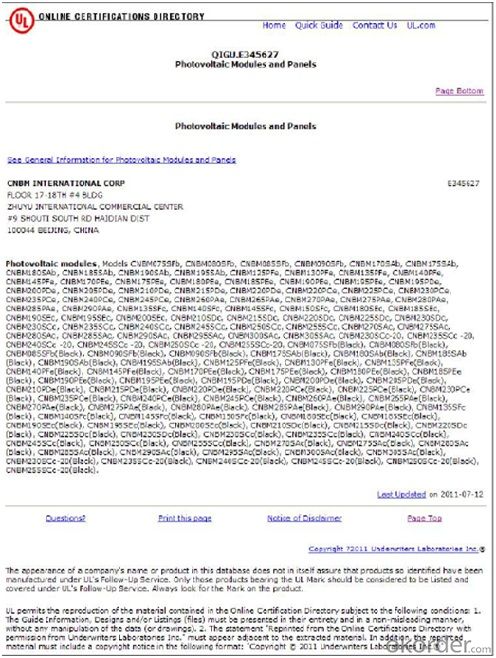
FAQ
We have organized several common questions for our clients,may help you sincerely:
①What price for each watt?
It depends on the quantity, delivery date and payment terms,
②What is your size for each module? Can you tell me the Parameter of your module?
We have different series of panels in different output, both c-Si and a-Si. Please take the specification sheet for your reference.
③Can you provide the peripheral products of the solar panels, such as the battery, controller, and inverter? If so, can you tell me how do they match each other?
Yes, we can, we have two companies for solar region, one is CNBM International, the other is CNBM engineering Co.
We can provide you not only the solar module but also the off grid solar system, we can also provide you service with on grid plant.
④What is your warranty system?
Our product performance guarantees for 25 years
• 12 years guarantee for workmanship
• Timeliness of delivery
• Quality Products certified (TÜV, UL, CE, ISO)
⑤How do you pack your products?
We have rich experience on how to pack the panels to make sure the safety on shipment when it arrives at the destination.
⑥ Can you do OEM for us?
Yes, we can.
⑦How long can we receive the product after purchase?
In the purchase of product within three working days, We will arrange the factory delivery as soon as possible. The pecific time of receiving is related to the state and position of customers.Commonly 7 to 10 working days can be served.
- Q: I have several 6v 4.5a sealed lead acid batteries. I would like to hook one of them up to a solar panel and have it stay charged from the solar panel all the time, but not overcharged. Is there a simple way to do this with an IC or something? I am only a beginner with circuits so I want it to be something very easy to make. Basically, I want it to stay charged all the time so it's available if I need it for a power out or something.Thanks.
- Yes, you can purchase a solar photovoltaic array to keep your batteries charged. You will need a Photovoltaic Cell Panel that produces 27 + watts (6volts x 4.5 amps = 27 watts) at 6 volts of electricity, a Charge Controller that allows only 4.5 amps of power through to the battery and will reduce the amps as the battery nears full charge and shut off the Panel when the battery is fully charged, and a 6v. Battery. Figure you will need a photovoltaic panel capable of producing a minimum of 27 watts if you are going to charge a completely dead 6 v. battery in one day. (with a clear sky). The way the system works is the sunlight strikes the cells on the panel and releases the excess electrons in the cells, they travel along central wires to your battery and charge the battery. When the sun sets, the procedure is reversed and the electrons flow backwards from the battery, into the photovoltaic cells. That is where the Charge Controller is needed. It acts a one way gate and lets the electrons go into the battery, but won't let them go backwards to the Panel. Just set your panel in the sun at the optimum angle for the season and your latitude on earth, connect the charge controller and then the battery, and it will keep your battery charged. Don't waste your money on the small wattage solar photovoltaic systems that claim to keep your battery charged. They simply can't do it unless your battery is in like new condition and is fully charged when they are hooked up. If you battery is a few months old, the small wattage photovoltaic systems can't keep up with the loss of power from sulfation inside the battery.
- Q: I want to add solar panels to my home. I was looking online and it seems there are so many different kinds! How does it hook up to the electrical grid? How much do I need for a 2000 sf home?
- Here is a site to help
- Q: I have a college project due within a week, and it involves a 00 Watt solar panel and a 2V 7.5Ah Battery. I got the project finished up and producing free energy for my house in September, however recently the battery I bought, that was specifically made to hold Solar Power, lost its charge (unsure how or why) and it is pretty much useless. Can I just go to a store and buy any 2V car battery to use?
- Those answers are partly correct. You cannot recharge two 2 volt batteries in series with a photovoltaic panel with an open circuit voltage of 8 volts. You possibly over charged your 7.5 AH battery with a 00 watt photovoltaic panel, which can supply 8 amps to the battery with unusually bright sun light = fully charged in one hour. More likely you did not charge the battery for a month or more which killed it. Also discharging below 2.6 volts shortens the life of the battery, or short circuiting the terminals even briefly. Yes a deep cycle sealed lead acid battery rated 2 AH is likely the best unless you buy a 00 amp hour marine battery which weighs about 80 pounds and will take at least two days of bright Sun to fully charge.
- Q: Can solar panels be used in areas with high levels of snowfall?
- Yes, solar panels can be used in areas with high levels of snowfall. However, the performance and efficiency of the panels may be affected during snowy conditions. Regular snow removal or tilted mounting angles can help maximize their effectiveness in such areas.
- Q: Can solar panels be installed on the ground instead of a roof?
- Yes, solar panels can be installed on the ground instead of a roof. Ground-mounted solar panels are a viable alternative when roof space is limited or unsuitable for installation. Ground installations offer flexibility in panel orientation and tilt, making it easier to maximize solar energy production. Additionally, ground-mounted systems are often easier to maintain and can be expanded more easily than roof-mounted ones.
- Q: How do solar panels generate electricity?
- Solar panels generate electricity through the photovoltaic effect. When sunlight hits the solar cells within the panels, the photons from the sunlight excite the electrons in the cells, causing them to move and create an electric current. This current is then captured and converted into usable electricity for various applications.
- Q: Can solar panels be used for heating a greenhouse?
- Yes, solar panels can be used for heating a greenhouse. Solar panels can generate electricity, which can then be used to power heaters or heat pumps inside the greenhouse to provide warmth. Additionally, solar panels can also be used to heat water, which can be circulated through pipes or radiators to provide radiant heat in the greenhouse.
- Q: Can solar panels be installed in extreme temperatures?
- Yes, solar panels can be installed in extreme temperatures. Solar panels are designed to withstand a wide range of temperature conditions, including both hot and cold environments. However, extreme temperature conditions may affect the efficiency of the panels, reducing their overall performance slightly.
- Q: Can solar panels be installed on community centers or libraries?
- Yes, solar panels can be installed on community centers or libraries. In fact, community centers and libraries are often ideal locations for solar panel installation due to their large roof spaces and potential for generating significant amounts of clean energy. Additionally, solar panels on these public buildings can serve as a visible example of renewable energy adoption and can help reduce electricity costs while promoting sustainability within the community.
- Q: I am currently building a house, iv designed it to be as self sustainable as possible, I'm in the process of installing solar panels but as I'm ordering online I was hoping someone here could tell me how many I would need to completely run a 5 bedroom home, just standard household appliances such as fridge and freezers, plasma tvs computers and of course lighting, various things like that, also I'll need power storage as well, some type of large rechargeable battery, any help would be great.
- I am a current solar panel professional worker. I suggest you try to obtain a 34RTS TurbibineIVX solar panel as it will cover all your energy needs.
Send your message to us
Solar Panels Cleveland - Solar Polycrystalline Panels Max Power 280-W
- Loading Port:
- Shanghai
- Payment Terms:
- TT OR LC
- Min Order Qty:
- 100 pc
- Supply Capability:
- 30000 pc/month
OKorder Service Pledge
OKorder Financial Service
Similar products
Hot products
Hot Searches
Related keywords
